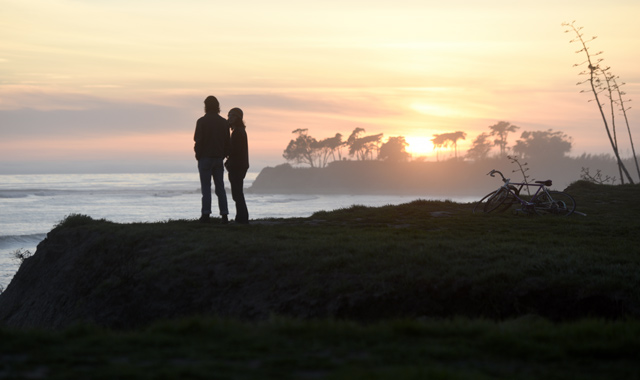Santa Barbara’s Beauty Is Ours to Preserve
Central Coast Heritage Protection Act Will Preserve Area's Rich and Fragile Ecology

Here on the Central Coast, the beauty of our natural landscape is unrivaled. With hundreds of miles of trails, crystal clear streams, and extraordinary ocean and mountain vistas, residents and visitors flock to Los Padres National Forest to hike, bike, camp, picnic, fish, and observe wildlife.
Birders go nuts here — the migration route along the Pacific flyway is one of the most important in the world. The wildlife viewing is world class — Los Padres National Forest provides habitat for 1,200 plant species and 468 species of wildlife, including the endangered California condor and the southern steelhead. The Condor Trail is one of the few places in the world where you can witness desert species growing alongside redwoods.
I’m a Central Coast resident and a lover of our great outdoors, but I also have a vested interest in preserving these special places for the future. That’s why I support legislation known as the Central Coast Heritage Protection Act. Now, more than ever, is a crucial time to take bold, courageous, and specific steps to protect these special swaths of the Central Coast.
Through the Central Coast Heritage Protection Act, we’ll safeguard the ecological future of the Carrizo Plain National Monument and Los Padres National Forest, California’s third largest national forest, which rises from the Pacific Ocean to over 8,800 feet in elevation. It is here we can secure the first wilderness protection on the Central Coast in 20 years and leave a positive legacy for the next hundred.
As the steward of the Santa Barbara Museum of Natural History, I have a unique perspective into how much can happen in 100 years. Our institution, which began as a collection of bird eggs, is celebrating its 100th birthday this year; and our once humble collection has grown into a trove of more than 3.5 million vertebrate and invertebrate specimens.
The strength of our collections is in documenting the biodiversity of the Central Coast region; some of our scientists have spent more than 40 years, the length of their career, performing field research on these wild and scenic lands. Museums like ours curate collections over decades, and it is that unbroken chain of specimens that provide opportunities for longitudinal study — helping us understand how humans have been impacting these incredibly fragile ecosystems over time.
We can see clearly from our research over the past 10 decades the effects of human impacts on this region — the landscape has been eroded, native habitats have declined, and ecosystems on the Channel Islands and on the mainland have been dramatically altered. Native plant communities on the islands were decimated by more than 150 years of uncontrolled grazing following the introduction of sheep, goats, pigs, and cattle. Twenty-six protected species, many animals like the California tiger salamander that live nowhere else, are teetering on the brink of extinction. The Channel Island fox was almost wiped out as habitat changes brought new and lethal predators in the form of golden eagles to the islands.
It’s more important than ever to understand the richness and fragility of these ecosystems, how deep the threats are, and how we can live with greater sensitivity. Because what we also have learned over the last 100 years is that if we make smart changes, nature is incredibly resilient. It’s actually a very hopeful story, and the recovery of the California condor and the Channel Island fox are testaments to our ability to effect positive change.
We have an opportunity with the Central Coast Heritage Protection Act to protect natural habitats which are the foundation of ecosystem health and the natural beauty of this place. This legislation offers a historic chance to preserve special places on the Central Coast. The bill will conserve 245,500 acres of wilderness, create two scenic areas encompassing 34,500 acres, and safeguard 159 miles of wild and scenic rivers. This will in effect protect the thousands of plant and animal species living in Los Padres National Forest and Carrizo Plain National Monument, 26 of which are protected species on the brink of extinction or threatened with extinction if habitat continues to degrade. The area being proposed for protection is home to more threatened and endangered species than any other national forest in California.
There’s real urgency to pass the Central Coast Heritage Protection Act as soon as possible, because Sen. Boxer and Rep. Capps are retiring at the end of 2016. Protection of these areas would be a priceless gift to future generations and would underscore the valuable contribution these two public servants have made to preserving California’s natural heritage.
It’s critical that we come together and find the political and social will to take significant steps toward protecting this special piece of Earth. I urge our Congressional leaders to make our public lands and rivers a priority and pass the Central Coast Heritage Protection Act. We need to protect these places before they’re gone — and right now is the time to act.
Luke Swetland is president and CEO of the Santa Barbara Museum of Natural History.



